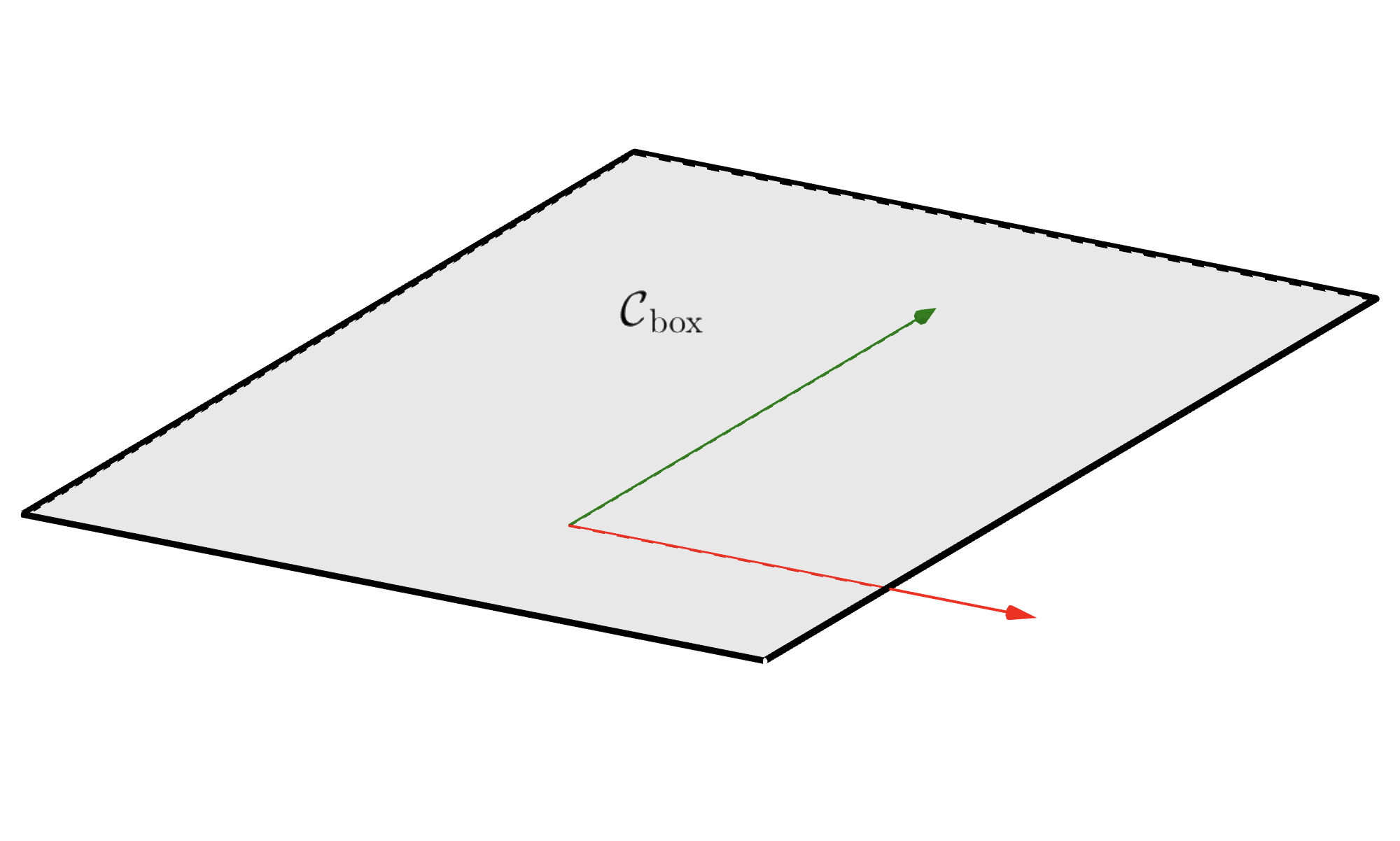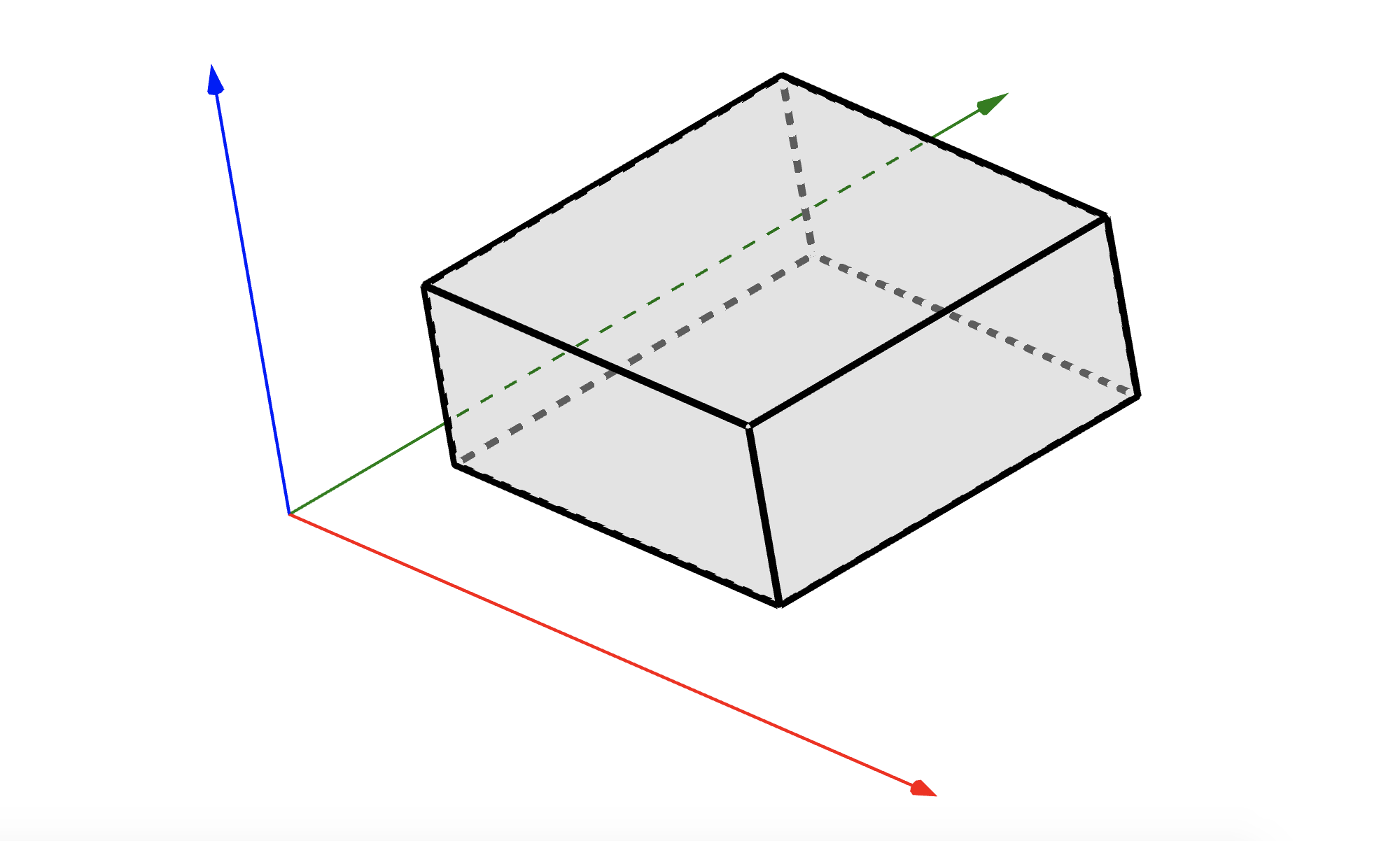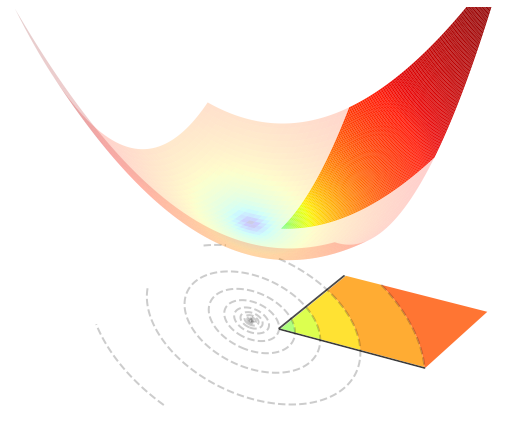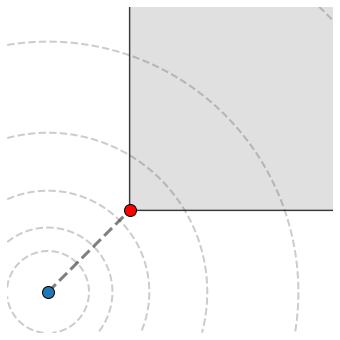5.4.1. Box#
Given the scalars \(a_i \in \mathbb{R} \cup \{-\infty\}\) and \(b_i \in \mathbb{R} \cup \{+\infty\}\), the box is a linear constraint defined as
The condition \(a_i \le b_i\) is required for this subset to be nonempty, possibbly with \(a_i=-\infty\) or \(b_i=+\infty\) to drop some of the lower/upper bounds. The figure below shows how this constraint looks like in \(\mathbb{R}^{2}\) or in \(\mathbb{R}^{3}\).


5.4.1.1. Constrained optimization#
Optimizing a function \(J({\bf w})\) subject to the box constraint can be expressed as
Defining the vectors \({\bf a} = [a_1, \dots, a_N]^\top\) and \({\bf b} = [b_1, \dots, b_N]^\top\) allows one to render the box constraint as a single liner \({\bf a} \le {\bf w} \le {\bf b}\), so that the above problem can be compactly written as
The figure below visualizes such an optimization problem in \(\mathbb{R}^{2}\).

5.4.1.2. Orthogonal projection#
The projection of a point \({\bf u}\in\mathbb{R}^{N}\) onto the box is the (unique) solution to the problem
The solution can be analytically computed as follows.
Projection onto the box
The next figure visualizes a point \({\bf u}\in \mathbb{R}^{2}\) (blue dot) along with its projection (red dot) onto this set.

5.4.1.3. Implementation#
The python implementation is given below.
def project_box(u, lower=None, upper=None):
assert lower is None or upper is None or np.all(lower <= upper), "Required: lower <= upper"
p = np.clip(u, lower, upper)
return p
Here are some examples of use.
u = np.array([-0.5, -0.5])
p1 = project_box(u, lower=0)
p2 = project_box(u, upper=0)
p3 = project_box(u, lower=[0,-np.Inf], upper=[np.Inf, 1])
